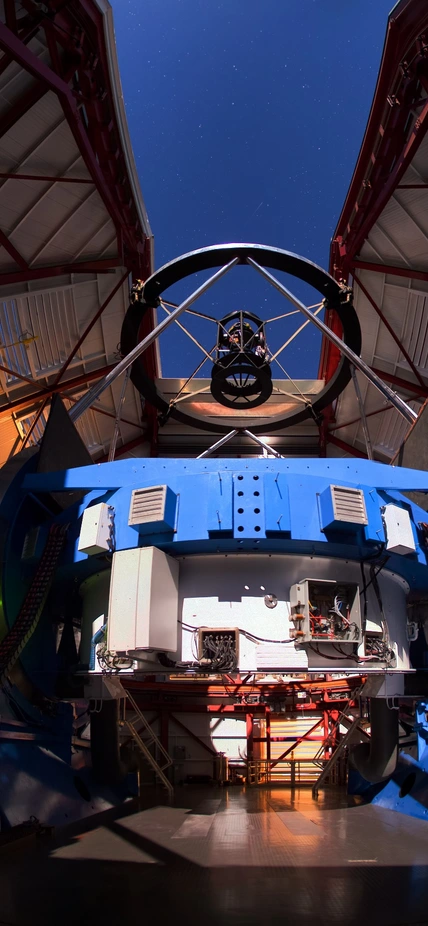Pasadena, CA— A team of scientists, led by Michael Rauch from the Carnegie Observatories, has discovered a distant galaxy that may help elucidate two fundamental questions of galaxy formation: How galaxies take in matter and how they give off energetic radiation. Their work will be published in the Monthly Notices of the Royal Astronomical Society.
During the epoch when the first galaxies formed, it is believed that they radiated energy, which hit surrounding neutral hydrogen atoms and excited them to the point where they were stripped of electrons. This produced the ionized plasma that today fills the universe. But little is known about how this high-energy light was able to escape from the immediate surroundings of a galaxy, known as the galactic halo. The galaxies we observe today tend to be completely surrounded by gaseous halos of neutral hydrogen, which absorb all light capable of ionizing hydrogen before it has a chance to escape.
Rauch and his team, using the Magellan Telescopes at Las Campanas Observatory and archival images from the Hubble Space Telescope, discovered a galaxy with an extended patch of light surrounding it. The objects appearance means that roughly half of the galaxy’s radiation must be escaping and exciting hydrogen atoms outside of its halo.
The key to the escape of radiation can be found in the unusual, distorted shape of the newly observed galaxy. It appears that the object had recently been hit by another galaxy, creating a hole in its halo, allowing radiation to pass through.
“The loss of radiation during galactic interactions and collisions like the one seen here may be able to account for the re-ionization of the universe”, Rauch said. “This galaxy is a leftover from a population of once-numerous dwarf galaxies. And looking back to a time when the universe was more dense, crashes between galaxies would have been much more common than today.”
The new observation also helps scientists better understand the flow of inbound matter, from which a galaxy originally forms. In the present case, the escaping ionizing radiation illuminated a long train of incoming gas, which is feeding new matter into the galaxy. The existence of such structures had been predicted by theory, but they had not been seen previously because they barely emit any light of their own.
The co-authors on this paper are George Becker and Martin Haehnelt from the Kavli Institute for Cosmology at Cambridge University, Jean-Rene Gauthier from The Kavli Institute for Cosmological Physics at the University of Chicago, Swara Ravindranath from the Inter-University Centre for Astronomy and Astrophysics, and Wallace Sargent from the Palomar Observatory at California Institute of Technology.
